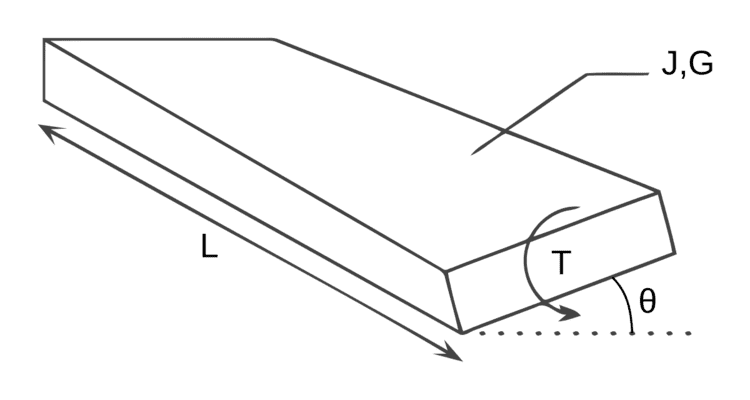 | ||
The torsion constant is a geometrical property of a bar's cross-section which is involved in the relationship between angle of twist and applied torque along the axis of the bar, for a homogeneous linear-elastic bar. The torsion constant, together with material properties and length, describes a bar's torsional stiffness. The SI unit for torsion constant is m4.
Contents
History
In 1820, the French engineer A. Duleau derived analytically that the torsion constant of a beam is identical to the second moment of area normal to the section Jzz, which has an exact analytic equation, by assuming that a plane section before twisting remains planar after twisting, and a diameter remains a straight line. Unfortunately, that assumption is correct only in beams with circular cross-sections, and is incorrect for any other shape where warping takes place.
For non-circular cross-sections, there are no exact analytical equations for finding the torsion constant. However, approximate solutions have been found for many shapes. Non-circular cross-sections always have warping deformations that require numerical methods to allow for the exact calculation of the torsion constant.
The torsional stiffness of beams with non-circular cross sections is significantly increased if the warping of the end sections is restrained by, for example, stiff end blocks.
Partial Derivation
For a beam of uniform cross-section along its length:
where
Circle
where
r is the radiusThis is identical to the second moment of area Jzz and is exact.
alternatively write:
Ellipse
where
a is the major radiusb is the minor radiusSquare
where
a is half the side lengthRectangle
where
a is the length of the long sideb is the length of the short sideAlternatively the following equation can be used with an error of not greater than 4%:
Thin walled open tube of uniform thickness
Circular thin walled open tube of uniform thickness (approximation)
This is a tube with a slit cut longitudinally through its wall.
This is derived from the above equation for an arbitrary thin walled open tube of uniform thickness.
Commercial Products
There are a number specialized software tools to calculate the torsion constant using the finite element method.
